Can LED Strip Lights Be Used Outdoors?
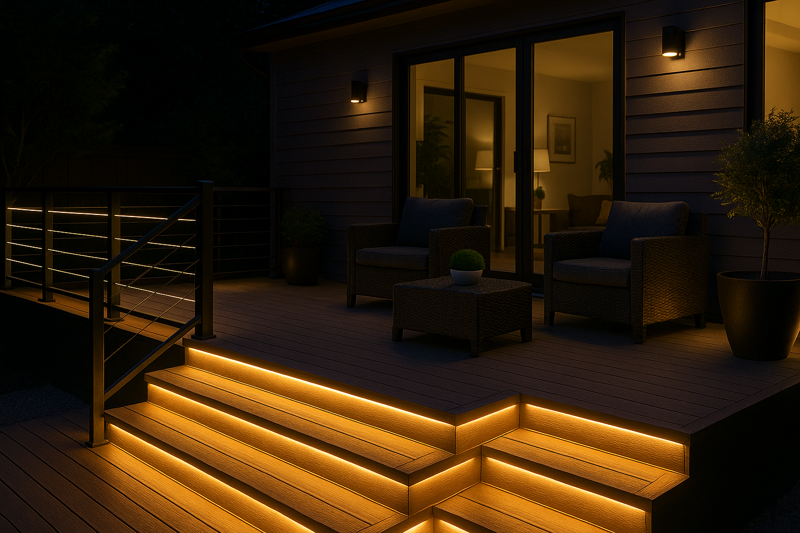
You want to bring that beautiful, modern glow to a deck, patio, or landscape design. But you’re worried that the first sign of rain will short-circuit the system and ruin your hard work.
Yes, you can absolutely use LED strip lights outdoors, but you must use a model specifically designed for it. These are called waterproof or weather-resistant strips and carry an Ingress Protection (IP) rating of IP65 or higher to protect them from dust and moisture.

The biggest mistake I see professionals make is assuming any LED strip will work outside. An indoor strip (rated IP20) will fail in a matter of days, if not hours, when exposed to dew, rain, or humidity. The difference between a durable, decade-long outdoor installation and a failed project is choosing the right waterproof product and components from the start.
Can LED Light Strips Get Wet?
You’ve installed lights along a garden path, and the weather forecast calls for heavy rain. Will this new installation survive the downpour, or will you get an angry callback?
Yes, specially-made LED strips can get wet. A strip with an IP65 rating is protected against water jets (like rain or sprinklers) by a silicone coating. For areas that may be briefly submerged, an IP67 rating is needed. For underwater use, you need IP68.
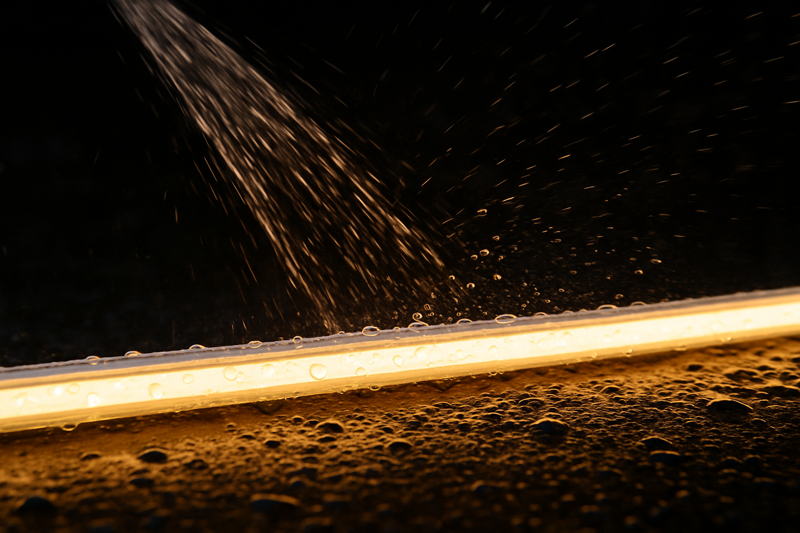
The ability to handle water is not a feature of all LED strips; it is a specific, engineered characteristic defined by the IP rating. An IP20 indoor strip has its electronics completely exposed. The slightest moisture can bridge the circuits and cause an immediate failure. A waterproof strip encases that same circuit in a protective, non-conductive sheath, usually silicone. This coating is what allows it to get wet without any damage.
The IP Rating Is Everything
The IP (Ingress Protection) rating is an international standard that tells you exactly how protected a device is against solids and liquids. It’s a two-digit number, and for outdoor lighting, the second digit is the most important.
- The First Digit (Solids): For outdoor strips, this will almost always be a ‘6’. This means the strip is completely sealed against dust ingress. This is important for preventing dirt and grime from working their way into the electronics over time.
- The Second Digit (Liquids): This is the critical number for water protection.
- 5 (IP65): Protected against low-pressure water jets from any direction. This is the minimum standard for general outdoor use where the strip will be exposed to rain.
- 7 (IP67): Protected against temporary immersion in water (up to 1 meter for 30 minutes). Ideal for areas near pools or in places that might experience temporary puddling.
- 8 (IP68): Protected against continuous submersion in water under specified pressure. This is what you need for in-pool or in-fountain lighting.
| IP Rating1 | Level of Protection | Common Outdoor Application |
|---|---|---|
| IP20 | No protection against water. | Indoor use only. |
| IP652 | Protected from rain, sprinklers, water splashes. | Decks, patios, railings, signage. |
| IP67 | Can be temporarily submerged in water. | Around pools, docks, pathway edges. |
| IP68 | Can be continuously submerged in water. | Inside pools and fountains. |
How Do You Power Outdoor LED Strip Lights?
You’ve correctly chosen an IP67 strip for a deck project. But the power supply has a standard indoor plug on it. How do you get power to the strip safely?
You must use a waterproof, outdoor-rated power supply. These are typically IP67-rated, direct-wire units that are installed inside a weatherproof electrical junction box. This ensures every component of the system is sealed against moisture, from the wall to the strip.
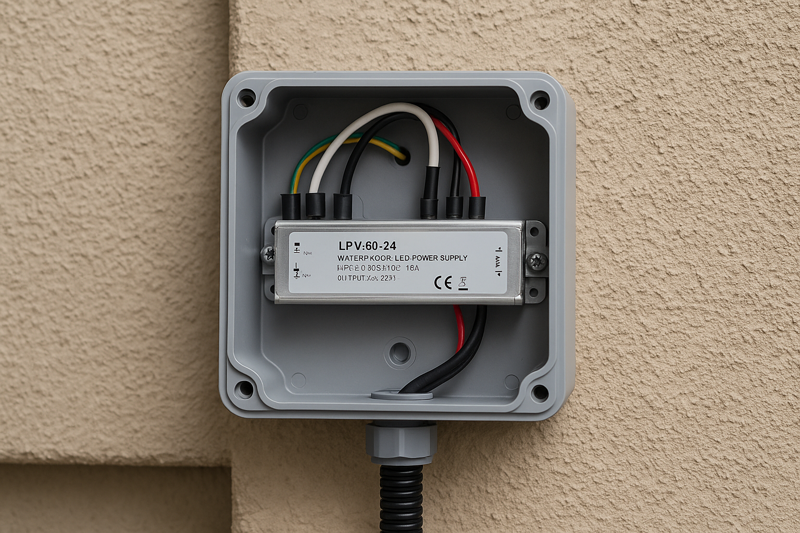
Plugging an indoor power adapter into an outdoor outlet, even a covered one, is a huge safety risk and a guaranteed point of failure. Moisture will eventually get into the adapter and cause a short. A professional outdoor system is hardwired. This means the high-voltage AC power is run to a weatherproof box, where it connects to the sealed, outdoor-rated power supply. That power supply then delivers the safe, low-voltage power to your LED strips.
Building a Weatherproof Power Chain
A chain is only as strong as its weakest link. For outdoor lighting, every single component must be weatherproof.
- The Power Supply (Driver): This is the heart of the system. It must be at least IP67 rated3. These units are typically sealed in an aluminum or tough plastic housing with no vents or openings. The AC input and DC output wires come from sealed grommets.
- The Connections: The high-voltage connections must be made inside a NEMA 3R or higher rated junction box. Use waterproof wire nuts filled with silicone to ensure moisture can’t corrode the connection.
- The Low-Voltage Wire: For any long runs from the power supply to the strip, use wire rated for direct burial or outdoor use. This wire has a tougher jacket that resists UV rays and moisture.
- Strip Connections: Any place where you cut and reconnect the outdoor LED strips must be resealed. This is typically done with waterproof end caps, a generous amount of clear silicone sealant, and waterproof heat-shrink tubing.
| Component | Minimum Requirement | Reason |
|---|---|---|
| Power Supply | IP67 Direct-Wire Unit | Prevents water from shorting out the electronics. |
| Junction Box | NEMA 3R4 Weatherproof | Protects the high-voltage connections from rain. |
| Wiring | Outdoor / Direct Burial Rated | Resists moisture and UV damage over time. |
| Connectors | Waterproof Solder/Heat Shrink | Keeps moisture out of the most vulnerable points. |
How Do You Know If LED Lights Are Waterproof?
You’re trying to choose a product for an outdoor project. The description says "water-resistant," but how can you truly tell if a strip can handle the outdoors?
First, check the specifications for an official IP rating—it should be IP65 or higher. Second, look at the strip itself. A waterproof strip will be fully encased in a clear, smooth, and often thick sheath of silicone or PVC. You should not be able to touch the LEDs or resistors directly.

Vague terms like "water-resistant" or "weatherproof" are marketing language. The IP rating is an engineering standard. If a supplier cannot provide you with a specific IP rating, do not trust the product for outdoor use. A visual inspection is also a reliable confirmation. An indoor strip feels like a piece of flimsy tape with delicate electronics exposed on top. An outdoor strip feels substantial, sealed, and robust, like a solid, flexible bar of light.
The Buyer’s Inspection Checklist
As a professional like Tom, you need to be able to verify product quality on sight.
- Look for the IP Rating5: It should be clearly printed on the product’s spec sheet, the packaging, and sometimes even on the strip itself. If it’s missing, consider it an indoor-only product.
- Examine the Coating6: An IP65 strip is typically coated on the top surface only, leaving the adhesive back exposed. An IP67 or IP68 strip is usually encased in a full silicone tube or a solid extruded jacket, sealing it from all sides. The coating should be perfectly clear, without any yellowing or bubbles.
- Check the End Caps: A factory-made waterproof strip will have professionally sealed, molded end caps where the wires enter. If it looks like it was just sealed with a dab of hot glue, the quality is questionable.
- Feel the Flexibility: The thicker the waterproof coating, the larger the strip’s bending radius will be. You cannot make sharp 90-degree folds with a quality IP67 strip; you must make a gentle curve or use a sealed corner connector.
| Feature | Indoor Strip (IP20) | Waterproof Strip (IP65+) |
|---|---|---|
| Visuals | Exposed LEDs & resistors | Electronics sealed in a clear coating |
| Specification | Might not list IP rating | Clearly states IP65, IP67, or IP68 |
| Feel | Thin and flimsy | Substantial, heavier, and more rigid |
Conclusion
Yes, you can use LED strips outdoors, and they create stunning results. The key is to use a product with the correct IP rating (IP65+) and ensure that every single component, from the power supply to the connectors, is also fully waterproof.
-
Understanding IP Ratings is crucial for selecting the right outdoor lighting to ensure durability and safety. ↩
-
Explore the IP65 rating to learn how it protects your outdoor lighting from rain and splashes, ensuring longevity. ↩
-
Understanding IP67 ratings is crucial for ensuring your outdoor lighting is protected from water damage. ↩
-
Exploring NEMA 3R standards will help you choose the right junction box for outdoor electrical installations. ↩
-
Understanding IP Ratings helps ensure you choose the right product for your needs, especially for outdoor use. ↩
-
Learning how to examine coatings can prevent poor quality purchases and ensure durability in your lighting solutions. ↩
Related Articles
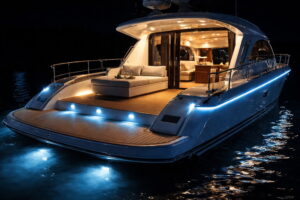
Why Do Most Marine LED Strips Fail After One Season?
You install a beautiful lighting package on a client’s yacht. Three months later, the lights are flickering, the white silicone…
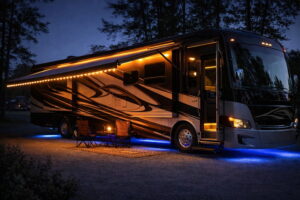
How Do You Choose RV LED Strips That Won’t Peel Off or Flicker on the Highway?
You are upgrading a $100,000 motorhome for a client. They want underglow lighting and awning lights to be the envy…
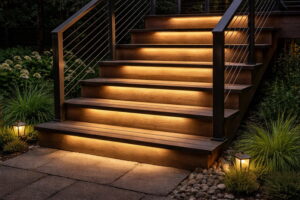
How Can You Light Outdoor Stairs for Maximum Safety Without Blinding the Homeowner?
You have finished a beautiful tiered deck or a stone landscape staircase. The client wants lights. If you do this…
